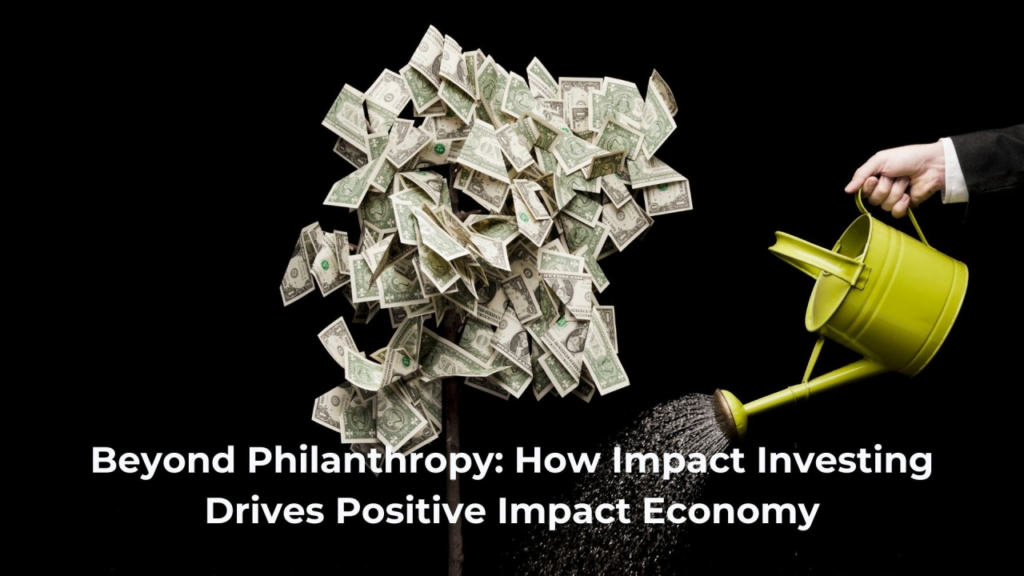
Access to water is a global challenge that affects both vulnerable communities and large industries. However, traditional solutions based on donations and philanthropy have proven insufficient. Campaigns for donating potable water, charity events, and temporary initiatives may provide immediate relief, but they rarely lead to sustainable change.
According to the United Nations , each person needs at least 100 liters of water per day, but total global water consumption is already unsustainable. It is not just potable water at risk—the excessive extraction for industry, agriculture, and manufacturing far exceeds the natural regeneration capacity of the water cycle. The real water consumption happens through industry, where each person indirectly requires up to 5,000 liters daily for food production, clothing, and other goods. Even internet use has a significant water footprint, proving that water consumption is not only direct but also embedded in the products and services we use daily.
Impact Investing, framed within Water Positive strategies, offers a model that transforms water management into a regenerative asset, ensuring long-term social, environmental, and economic impact. Through responsible production and consumption, industries can leverage #SDG6, ensuring that greater efficiency in water use leads to increased availability in the environment.
Moreover, this model represents a win-win system for all stakeholders involved. Corporations can continue producing and growing while generating water benefits instead of environmental impacts, maintaining economic growth. Offtakers or stakeholders, instead of competing for a scarce resource against industries—often benefiting from employment in the process—can now take advantage of a water resource that was previously a source of competition. This is not through direct water donations but through investments that promote the sustainable development of their region. Additionally, local developers play a key role, creating employment and strengthening the ecosystem of professionals dedicated to water management. This not only increases the positive impact on communities but also fosters a water culture that is currently lacking.
Water donations are often reactive responses to crises, natural disasters, or structural access issues. While they are essential in emergencies, their impact is short-lived and does not generate systemic change. Some issues with this approach include:
This model does not address the root causes of the problem: water resource degradation, poor urban planning, and the lack of economic incentives for efficient water use.

Impact Investing is at the core of the transition to a regenerative economy, particularly regarding water resources, promoting investments that not only generate financial returns but also create environmental and social benefits. Unlike philanthropy, this approach is based on self-sustainability and scalability. In the case of water, a resource that intersects all 17 SDGs, well-structured projects can contribute to all of them simultaneously. All that is required is a strategic plan that goes beyond conventional boundaries. This is where investment is minimized while maximizing impact, as projects reinforce each other.
Consider an island where seawater is desalinated for human consumption. After use, wastewater is discharged into the ocean. Once mixed, the same water must be desalinated again.
With wastewater reuse, instead of discharging this water directly into the sea, it could be reused multiple times. The pressure difference between a seawater system and a reuse system can be 20 to 30 times higher. Without desalination, reuse would not be possible since there would be no water to reclaim. Furthermore, other processes can be integrated, such as anaerobic reactors to harness energy from effluents, reforestation and regenerative agriculture to enhance groundwater percolation, and many more. Without the initial drop of water, none of these processes would exist.
Companies and investment funds are already applying these principles with positive results. Examples include:

Water donations may be necessary in emergencies, but they cannot be the foundation of a sustainable strategy. Impact Investing, aligned with Water Positive models, provides an approach where water ceases to be a problem and becomes an opportunity. Rather than merely alleviating symptoms, Impact Investing funds solutions that regenerate water ecosystems while creating long-term economic and social value.
Moreover, the same volume of water provided through a philanthropic action is hundreds of times more expensive than achieving stewardship through Impact Investing. However, philanthropy is much simpler because it does not require engagement in how to generate the positive impact. In contrast, Impact Investing requires corporations to understand local challenges and develop long-term sustainable strategies.
This model is not only more efficient and scalable but represents the future of water management in a world where water resources are increasingly critical to global sustainability.
